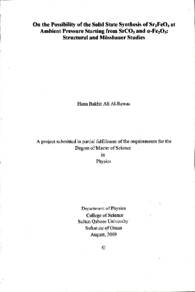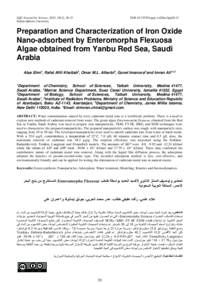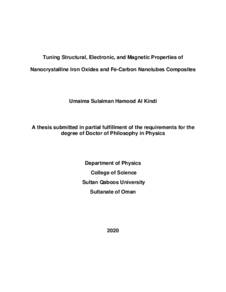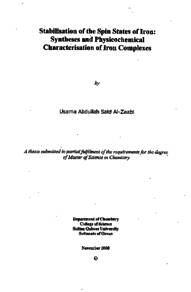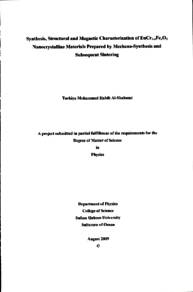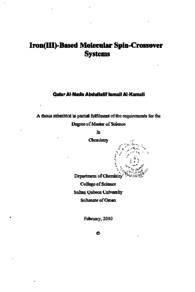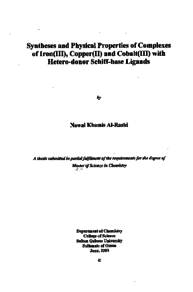Document
On the possibility of the solid state synthesis of Sr2FeO4 at ambient pressure starting from SrCO3 and a-Fe2O3 : structural and mossbauer studies
Publisher
Sultan Qaboos University
Gregorian
2009
Language
English
English abstract
The conventional synthesis of SrxFeO, involves the recurrent and prolonged sintering of a stoichiometric mixture of solid precursors at high temperatures (11001300°C) followed by sintering under high oxygen pressures (200 atm). The oxygen flow is clearly related to the high iron oxidation state (Fe) in this compound.
In this study we report on the possible formation of Sr FeO, starting from a 4: 1 molar mixture of SrCO; and a-Fe2O3 at normal atmospheric pressure (1 atm) using a variety of solid-state preparation routes. These routes were the ceramic technique, mechanical milling in air followed by sintering and milling-interrupted sintering. In all these routes the sintering was performed under air and oxygen flow. The structural phase evolution and the kinetic of reactions during formation process were investigated using X-ray diffraction (XRD), thermo-gravimetric and differential scanning calorimetric analyses (TGA/DSC) techniques as well as Mössbauer spectroscopy. These techniques were used to find out whether a single-phased Sr, FeO4 forms at the end of each reaction and also to estimate, as accurately as possible, the SrxFeO fraction in the final product of each reaction
The results consistently show that all routes attempted do not lead to the preparation of a single-phased Sr Fe04. In all cases, the final products were found to contain other phases, namely Srs Fe2O, and Srles, though in different proportions. Using the ceramic technique the maximum amount of Sr FeO, was found to form when the 1400°C pre-heated reactants mixture was sintered at 800°C (24 h) under oxygen flow (-9% of the final product). On heating the 1400°C pre-heated reactants' mixture at temperatures higher than 800, the fractional amount of Sr Fe04 in the final product was found to decrease even under oxygen flow. The results also indicate that sintering the 110 h pre-milled reactants' mixture of SrCO, and a-Fe2O3 in air results in the partial formation of Sr, FeO, at the relatively low temperature of 750°C. The maximum amount of SrxFeO, was attained when the110 h pre-milled reactants' mixture was sintered in air at 800°C (12 h),(-12% of the final product). This amount was found to be varying appreciably when the sintering atmosphere was changed to oxygen. Further sintering of the 110 h pre-milled mixture of the reactant led to the decrease of the fractional amount of Sr FeO in the final product.
It was clear from this study that under normal atmospheric pressure (1 atm) the sintering atmosphere (being air or oxygen) has not tangible effect on the amount of Sr FeO obtained.
Member of
Resource URL
Category
Theses and Dissertations

